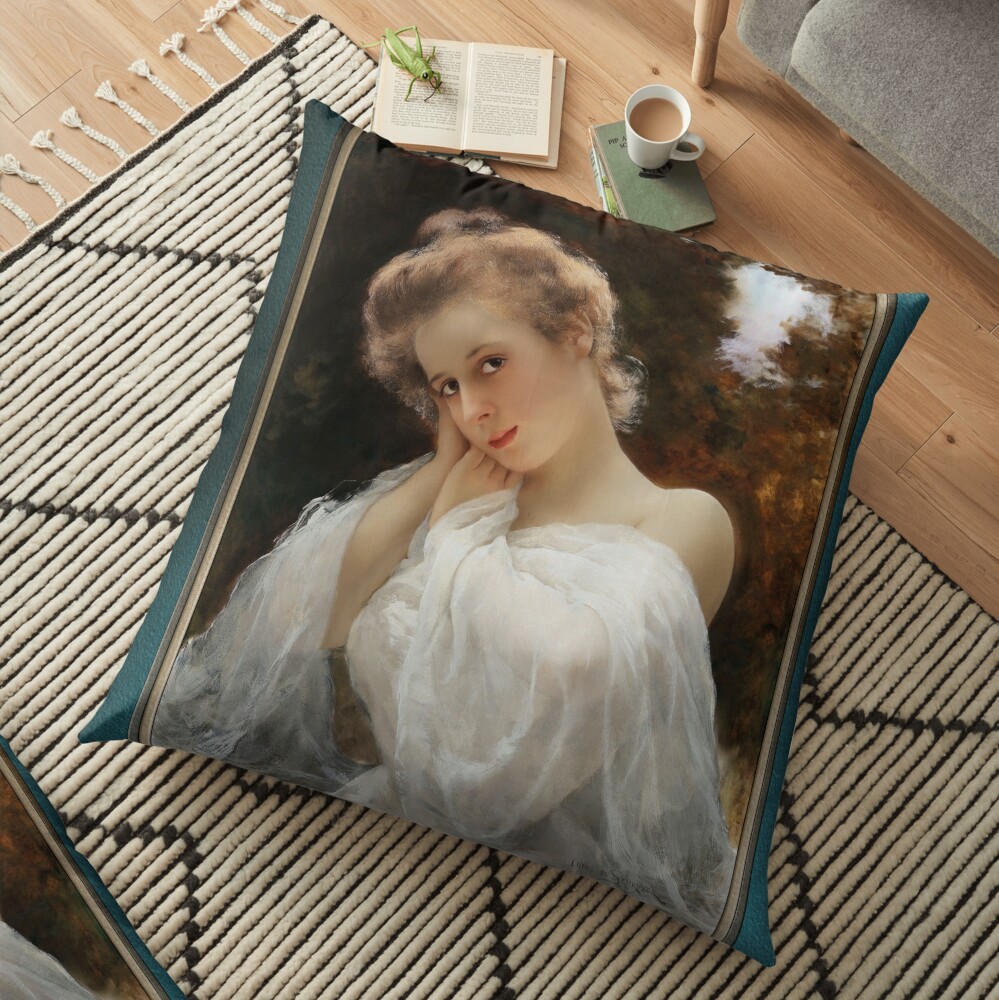
The Dreamer
The Dreamer by French Painter Louis Marie de Schryver (1862 – 1942); a Parisian street scene painter, portraitist and costume painter.
Ko ha meʻa fakaʻofoʻofa ʻeni tā ʻo ha finemui that is dressed in a sheer white linen robe or linen cloth wrap, that has both of her hands raised to the right side of her face as she looks at the view with a mysterious, but pleasing look.

She is standing in the middle of a clearing in a forest of reddish, brown, yellow and green trees with tall grass and a bright blue sky.
Ko ha remastered fakaʻilekitulonika ʻeni ʻo ha kau pule fakaʻilekitulonika motuʻa ʻo ha ʻimisi ʻo ha kakai ʻoku lava ke maʻu ko ha paaki ʻi he ʻInitaneti ʻa e fakatataa.
Fakamatala ʻi lalo naʻe haʻu mei he Rehs.com
Louis was born in Paris, France on October 12, 1862 to a well established journalist, and from a very early age was interested in art and began teaching himself how to paint.
He was so talented that by the age of 13 he exhibited to still life works Marguerites et Chrysanthèmes and Violettes et Fleurs Printanières at the 1876 Paris Salon.
The following year he began studying with the French Still Life and Genre Painter Philippe Rousseau (1816 – 1887), and also exhibited at the 1877 Paris Salon.
ʻI he 1880 ʻi hono taʻu 17 was awarded a bronze medal at the Sydney Worlds Fair for the painting entitled Lilas.
For the next six years he continued to submit still life paintings as well as genre scenes and portraits to the annual Salons; and by 1886 had focused his attentions to Parisian daily life, and began earning commissions to paint portraits of the high society figures of the time.
ʻI he 1891 he exhibited the painting La Fin d’une Rêve to the Paris Salon, which earned him a bronze medal; and then in 1900 he exhibited the Exposition Universelle, earning a Gold Medal.
During this period Louis shifted his attention from the period of La Belle Époque (1871 – 1880 mo e 1914 the outbreak of World War I), to that of painting portraits and doing costume painting that featured elegant men and women from a bygone era dressed in silk and satin attire.



